What is the Best Roof Ventilation Method? (Types of Roof Vents)
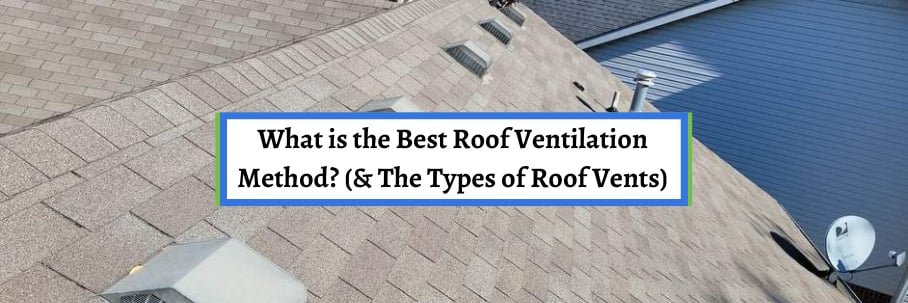
You’ll make some big decisions when getting a new roof. One of the biggest is deciding to keep your current roof vents and ventilation method or change it up.
Unfortunately, most homeowners don’t know enough about roof ventilation to make this decision. That’s why one of the most common questions I’m asked is, “What is the best roof ventilation?”
For over 30 years, the team at Bill Ragan Roofing has provided homeowners with the information needed to make the right decisions. That’s why I’ll break down the ventilation methods and help you understand which one is “best”.
This article covers the following:
- An overview of the two types of roof ventilation methods.
- Which roof ventilation method is best.
- Your roof vent options.
The two types of roof ventilation methods
Before getting to what’s best, you first need to know the two types of roof ventilation methods. Your roof’s (attic) ventilation is a system that allows your roof and home to breathe.
It works by pulling fresh air through your attic and allowing the heat to escape through your roof vents. There are 2 types of roof ventilation systems: active and passive.
While both do the job, they go about it differently.
Passive ventilation
Passive ventilation works by letting the air in the attic be moved around by natural sources. This type of roof ventilation system doesn’t rely on the vents to ensure the trapped air can escape, hence the name passive.
Passive roof ventilation relies on wind or convection (the cool air pushes the warm air out) to move the air in your attic around. The great thing about passive vents is that there are no moving parts, no noise, and they are virtually maintenance-free.
Active ventilation
Active ventilation pulls fresh air in from the outside and pushes out the air inside the attic. It creates a drawing effect when intake vents pull fresh air from outside and then push the air in your attic out of exhaust vents.
This system actively works to ensure the air in your attic is moving, hence the name active.
Which roof ventilation method is the best?
Now you know the difference between the two types of roof ventilation methods. But which one is the best?
The truth is both roof ventilation systems do the job, and one isn’t better than the other. The important thing is that your roof and attic are properly ventilated, no matter the ventilation method.
But while one isn’t better than the other, I do prefer and recommend an active roof ventilation system. The reason for this simply comes down to functionality.
For example:
Attics require a minimum of 1/150 of net free area (open area for air to pass through). This means that for each 150 square feet section in your attic, 1 square foot of net-free area is required for proper roof ventilation.
So, let’s say you have 1500 square feet in your attic (the numbers below are provided by Lamanco’s vent calculator).
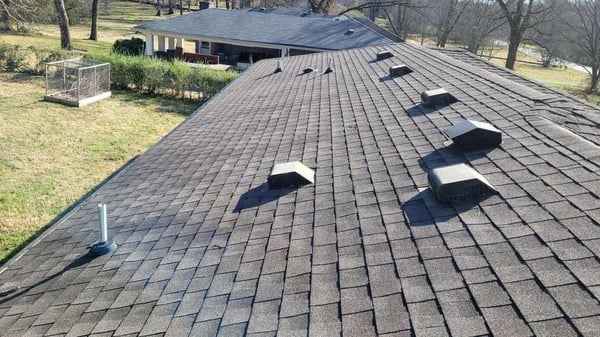 (Box vents)
(Box vents)
A standard-size box vent (passive ventilation) has 50 inches of net free air space. This means you would need 8 box vents to ensure your attic is properly ventilated.
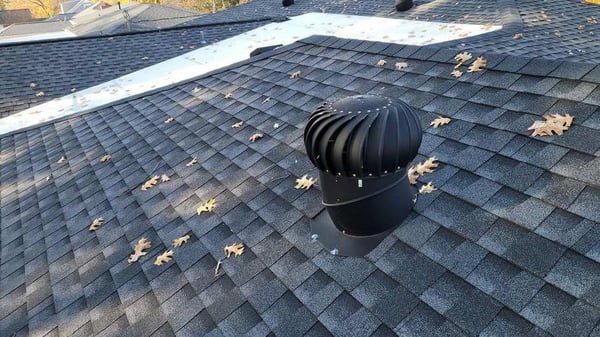 (Turbine roof vent)
(Turbine roof vent)
On the other hand, a 14” turbine vent (active ventilation) has 150 inches of net free air space, plus a drawing effect to constantly move the air around. Comparing this to the 8 box vents, you would only need 2 turbine vents for the same attic space.
As I said, one roof ventilation method isn’t better than the other. However, an active roof ventilation system ensures that air is moved through your attic and roof regularly.
The best types of active roof vents
Now you know that I prefer and recommend an active roof ventilation system. But if you choose an active roof ventilation system, you’ll also have to decide on an active roof vent.
Let’s learn the 4 best types of active roof vents.
Ridge vents with a baffle
Ridge vents are cut directly into a roof’s ridge and run the entire length of the ridge line. This roof vent is popular because of its low profile, meaning it’s not noticeable from the ground.
-1.jpg?width=600&name=RidgeVent%20(2)-1.jpg)
While a normal ridge vent is a passive vent, adding a baffle makes it an active vent. A baffle has chute that channels air to allow it to flow and move through your attic.
Just know that a ridge vent without a baffle can let insects, debris, rain, and snow enter the attic.
Turbine roof vent
I already mentioned this one in the example above, but turbine roof vents are a very popular active vent. Turbine vents (also called whirly birds) use a drawing effect through convection (heat rising) to move the air around your attic even when there’s no wind.
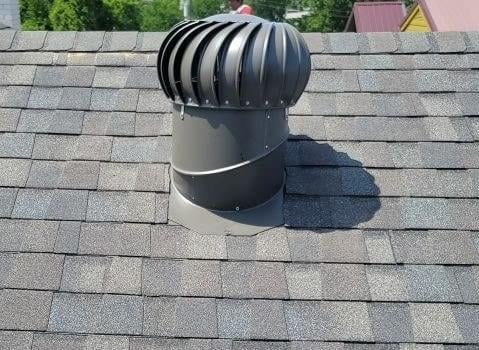
As long as it’s installed correctly, turbine vents move the air in your attic around 10-12 times per hour. Just know that there is a misconception that rain, snow, and insects can enter your home through the slats of turbine vents.
However, they’re specifically designed to prevent this from happening. The only time you would experience this is if the vent is damaged.
Power roof vent
Power vents are circular-shaped vents that use electricity to pull hot air out of an attic. They’re installed near the ridge of the roof and have a low profile.
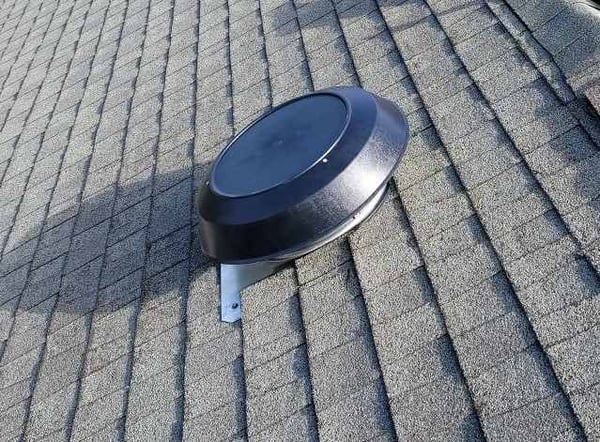
Because it requires electricity, you’ll need an electrician to come in before or after the roofing contractor installs them to ensure the wiring is set up correctly if there’s no power source. You’ll also want to run a humidistat alongside the power vent due to the humidity that builds up in your attic.
This humidity causes condensation that shortens your roof’s lifespan. Power vent motors do tend to fail eventually, so be prepared to replace them at some point in the lifespan of your roof.
Solar roof vent
Solar-powered vents are like power vents, except they use the sun as their power source instead of electricity. They’re great energy savers, but the solar battery won’t hold a charge long enough to power the vent all day.
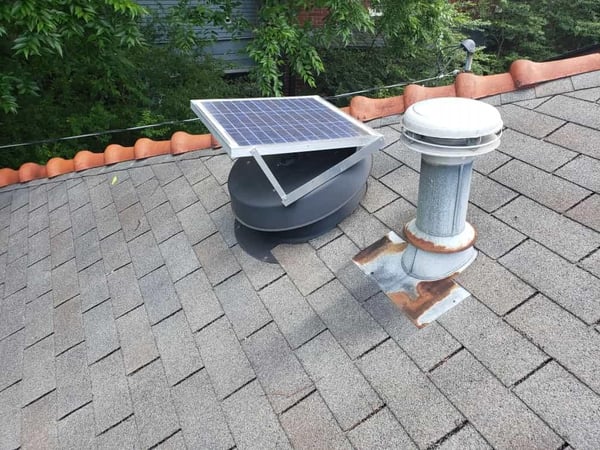
They’ll actually turn off when the solar-powered battery is charging. So, you may notice your air conditioner running more when it recharges.
Why is proper roof ventilation important to your roof and home?
Now you know the two types of roof ventilation methods, which one I recommend, and your active roof vent options. As I said, it doesn’t matter which ventilation method you choose as long as it’s done right.
But what if you don’t have proper roof ventilation? Is it really that important?
The answer to this is a resounding “Yes”. I can’t overstate just how important proper roof ventilation is to your roof and even your home.
That’s why I wrote another article breaking down the 3 main reasons why it’s crucial to have proper roof ventilation.
Since 1990, the team at Bill Ragan Roofing has provided high-quality roofing services to thousands of homeowners in Nashville and surrounding Middle Tennessee areas. We take pride in everything we do and back up our work with a lifetime craftsmanship guarantee.
Check out 3 Reasons Why Proper Attic Ventilation Is Important to Your Roof and Home to learn why it’s absolutely crucial that your roof is correctly ventilated.


